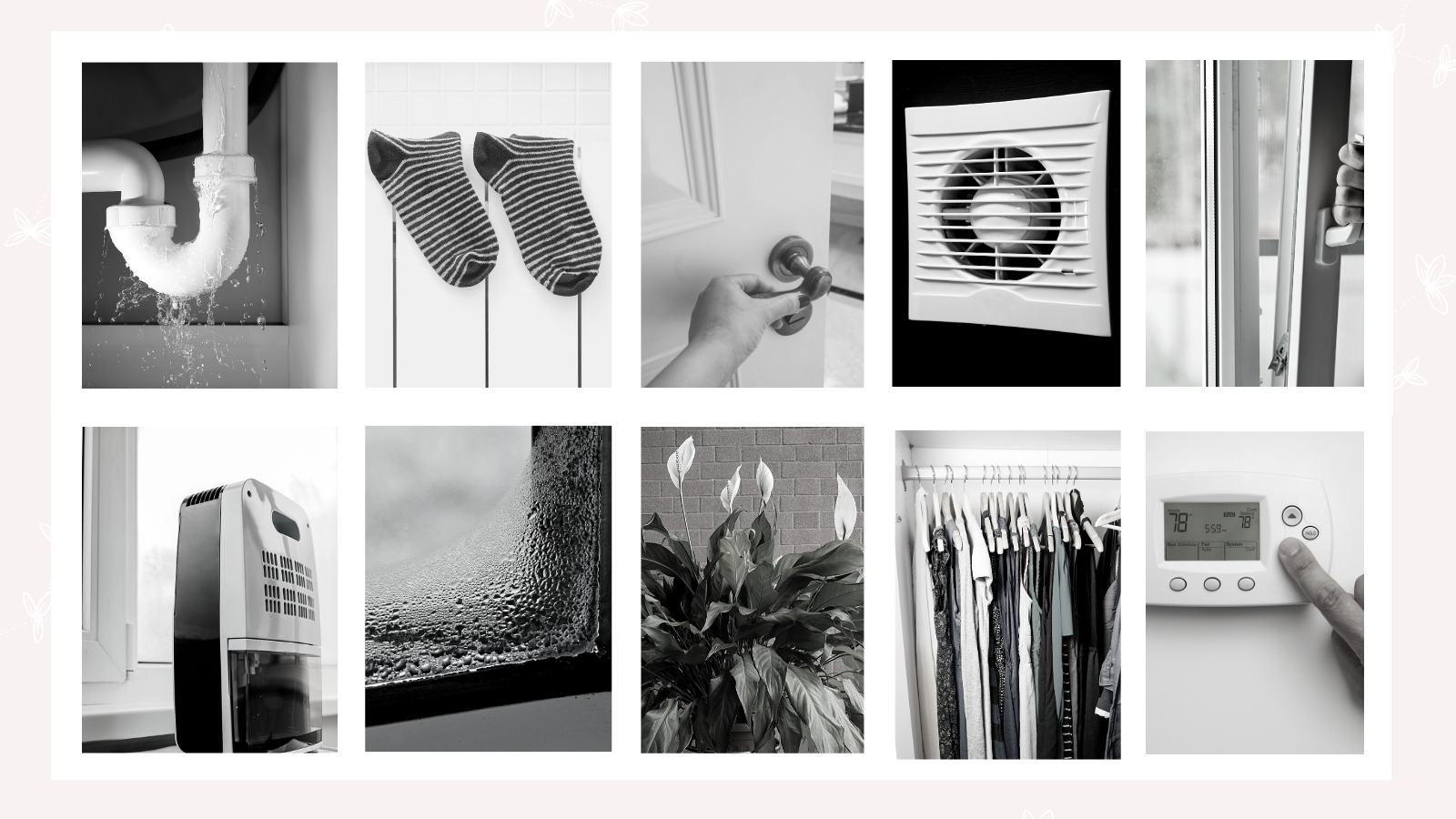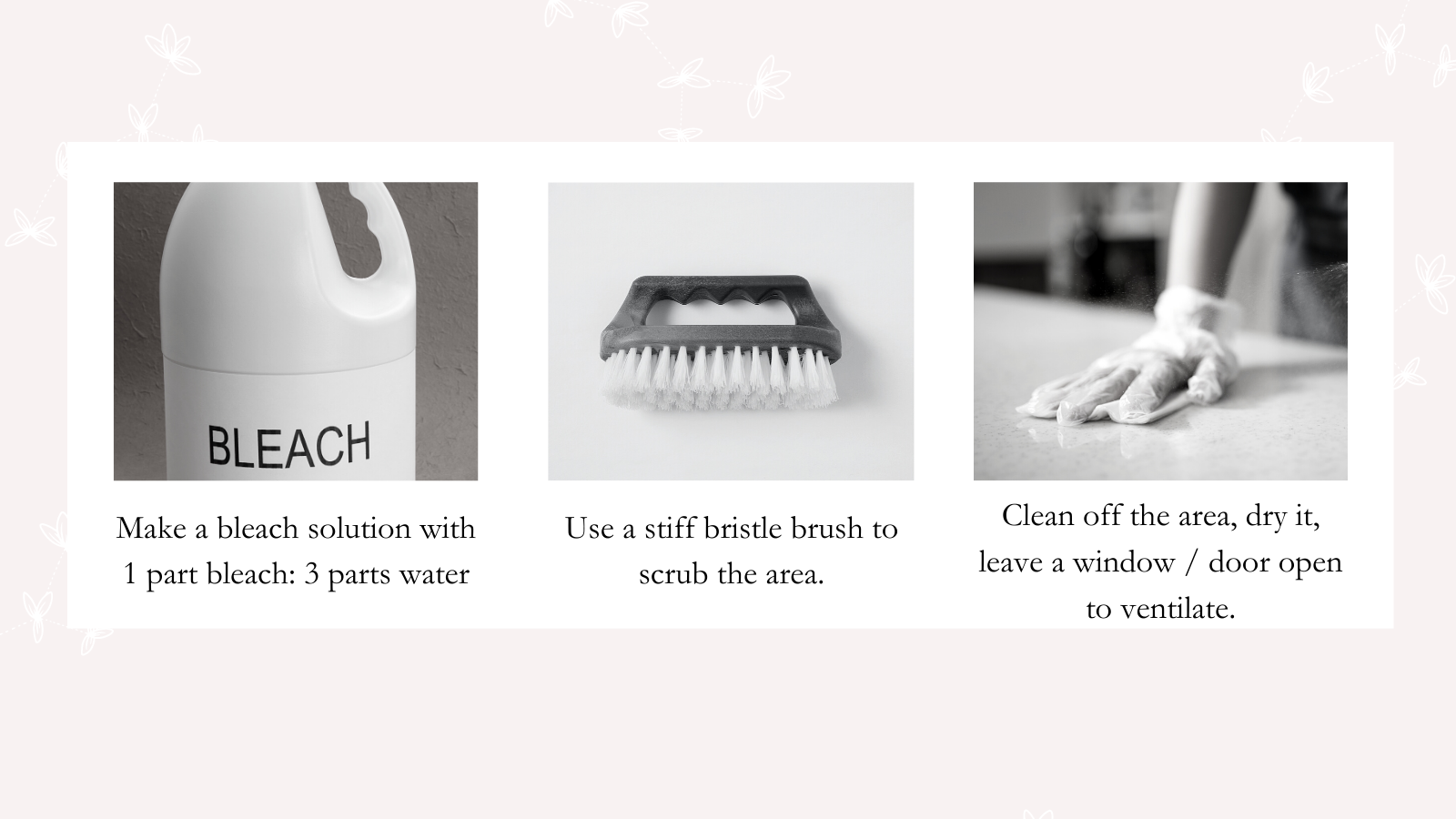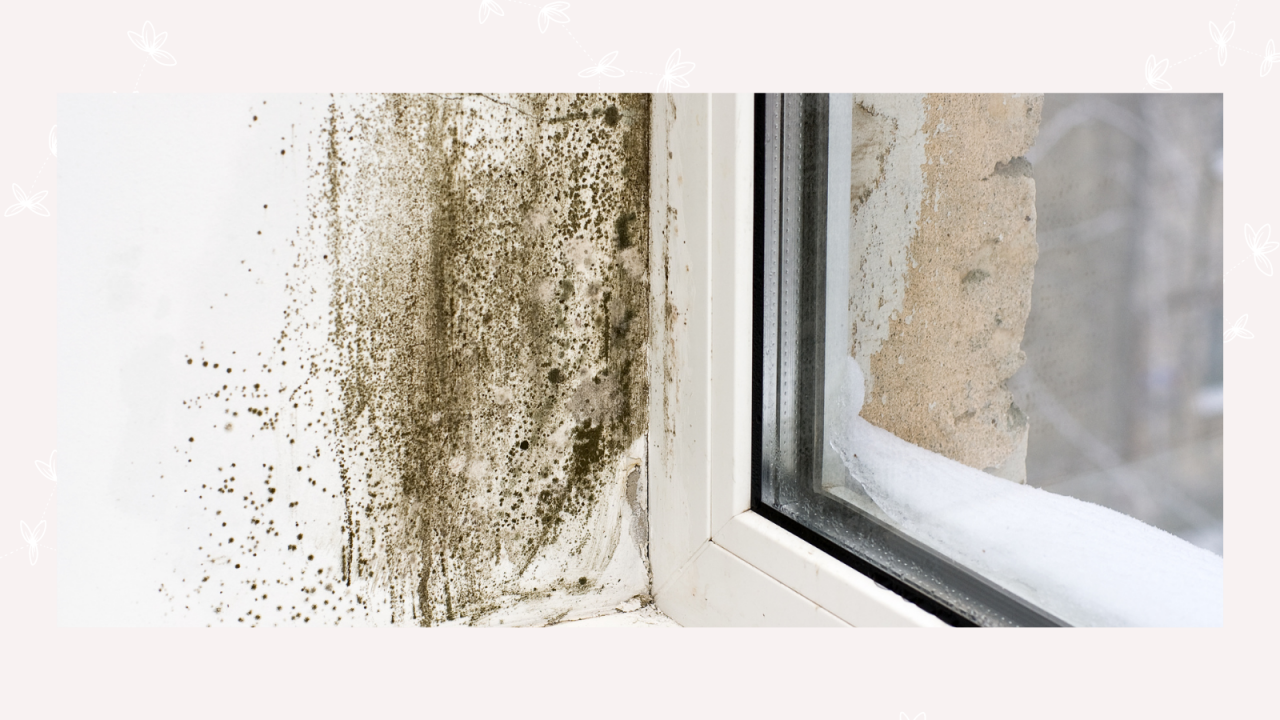Damp and mould in the home can be a health hazard, causing respiratory problems and exacerbating allergies. Making sure your home is free of mould and damp is not only important for your health, but it is also your responsibility as a tenant. Preventing damp and mould is much easier than you might think. This quick guide explains how some everyday habits contribute to damp indoors and offers simple solutions to minimise and deal with small damp and mould issues.
How to prevent damp and mould
Keep an eye out for leaks
Leaky window frames, pipework, walls and doors are common sources of moisture. If you see a leak, you should report it to us as soon as possible so we can deal with the problem swiftly. This will also stop the issue from turning into more serious problems and cause further damage to the property. In the meantime, use a bucket or bowl to collect any drips and make sure to keep surfaces dry with a mop or towel.
Drying clothes in a ventilated room
Don’t dry clothes on radiators. The vapour turns into moisture in the air and is then circulated around the rooms. This then gathers on walls, windows and other fabrics in the home and can be a mould risk. Instead, dry clothes on a clothes airer in a well-ventilated room. Open a window or use a dehumidifier to minimise the spread of moisture indoors.
Keep doors closed
Keep bathroom or kitchen doors closed when having a shower or bath, or when cooking. This will prevent moisture from spreading to other parts of the property.
Use extractor fans
If you have an extractor fan in the bathroom, always make sure it is running when you’re having a shower or bath. If you have an extractor fan in the kitchen, you should also use it to disperse moisture and cooking smells. In the absence of extractor fans, open a window when you cook to allow the moisture to escape.
Air property regularly
Open windows regularly to make sure your property is well-ventilated. Even when it’s cold, moisture gathers in the home so opening the window allows some of this moisture to escape.
Use a dehumidifier or damp trap
Using a dehumidifier is a great way to take the moisture out of the air, especially if you dry your clothes indoors. You can buy an inexpensive one from a local hardware store or online. Disposable damp traps can be picked up relatively cheaply, but over time, you might find it more economical (and environmentally friendlier!) to use an electric dehumidifier.
Wipe away condensation
Cleaning the condensation from windows and frames every day will minimise the spread of black mould. You can simply use a rag or towel to wipe away condensation.
Grow moisture-absorbing plants
Some plants can absorb moisture and pollution from the air and are a great addition to your damp prevention arsenal. Peace lilies, tillandsia, palms and ferns are all moisture absorbers — some ferns actually thrive in damper rooms such as kitchens and bathrooms, just make sure you also give them some indirect sunlight.
Not overstuffing your property
Avoid pushing furniture against the wall, or overstuffing wardrobes as this can cause damp and mould to grow and spread. Check behind furniture regularly for signs of damp or mould developing.
Turn on your heating
Running your heating can avoid cold spots, dry out damp and lower the chances of getting mould.

How to clean damp and mould spots
Damp commonly occurs in the bathroom, on exterior facing walls and around window and door frames. Keep an eye on these problem areas and clean the moisture and damp regularly to minimise your chances of getting black mould or mildew. If you do see mildew or mould forming, be sure to use gloves and a face mask before cleaning. Ventilate the room well when cleaning mould spots. Dispose of any rags that you have used to clean mould after using. Most black mould spots can simply be wiped off with a damp cloth. Be sure to dry the affected area after and leave the room to ventilate. If there is a more ingrained mould problem, such as in a bathroom or exterior wall, follow these steps.
- Make a bleach solution with 1 part bleach to 3 parts water.
- Use a stiff bristle brush to scrub the area.
- Clean off the area then dry it, then leave a window or door open to ventilate.

As always please contact Cherry Lets if you have any concerns or queries.






Share this with
Email
Facebook
Messenger
Twitter
Pinterest
LinkedIn
Copy this link